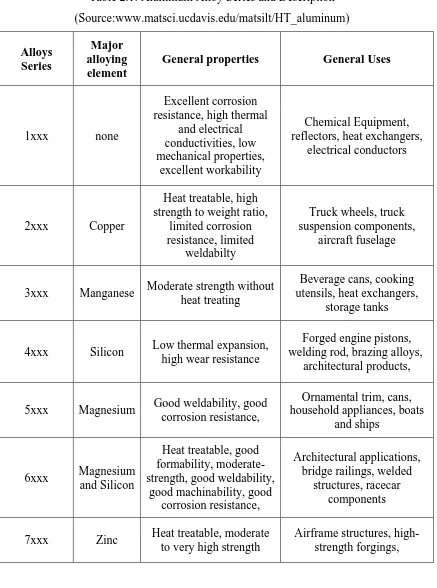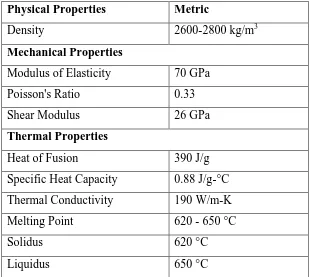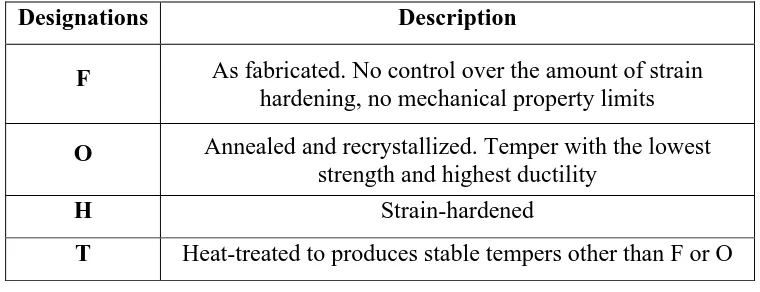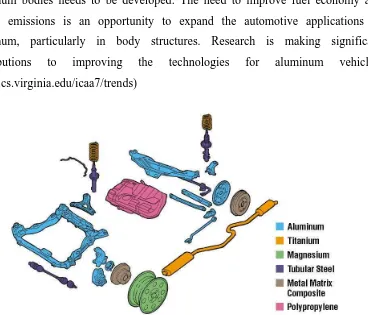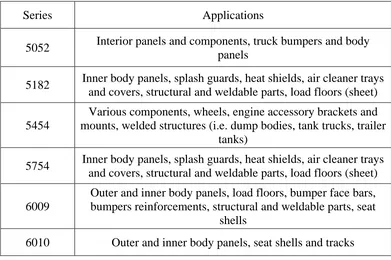iii
ACKNOWLEDGEMENT
Thanks to God I have completed my project. I would like to thanks to my supervisor Encik Mohd Fadzli B. Abdullah for his guide and support to finish this project. With his guidance and support, my work become easy and I really appreciate it. Thanks again to him.
I would like to express my gratitude to all lecturer and technician of Faculty of Mechanical Engineering especially Encik Mahader Muhamad (Technician of Material Science Laboratory) and the co-supervisor, Puan Rafidah Binti Hasan for taking some time of their busy schedule to guide me. Not to be forgotten to my fellow friends, Sarah Nadiah Abd Halim, Asrul Nizam Addrus and Mohd Hafiz Mohd Elias. Not to forget the Universiti Teknikal Malaysia Melaka (UTeM) that give opportunities to do this project and for all staff that gives cooperation on this dissertation. Thanks to all.
iv
ABSTRACT
The effects of resolution heat treatment temperature on the impact toughness of an aluminum alloy for aluminum alloy were study. 6061-T6 aluminum alloy were heat treated for four different re-solution treatment temperatures at 2 hour (520˚C, 540˚C,
v
ABSTRAK
Objektif utama kajian ini ialah mengkaji kesan rawatan haba semula 6061-T6
aluminum aloi. Rawatan haba semula ke atas 6061-T6 aluminum aloi dilakukan dalam
keempat keadaan selama dua jam pada suhu yang berlainan iaitu 520˚C, 540˚C, 560˚C
dan 580˚C. Ujian kekerasan Brinell dan ujian hentaman Charpy dijalankan setelah kesemua rawatan haba telah dilakukan. Daripada ujian kekerasan menunjukkan
bahawa nilai tertinggi kekerasan dicapai pada suhu tertinggi rawatan haba ke atas
aluminum aloi berbanding nilai kekerasan ke atas aluminum aloi tanpa rawatan haba
jelas sekali tinggi. Hasil daripada ujian hentaman menunjukkan bahawa haba dirawat
sampel ialah berkadar untuk terus ke atas penambahan suhu rawatan haba. Gambaran
mikrostruktur yang telah dijalankan mengunakan mikroskop optik imej penganalisis
vi
CHAPTER 2 LITERATURE REVIEW
2.1 Aluminum Alloy 4
2.1.1 Temper Designations of Aluminum
Alloy 7
2.1.2 6061-T6 Aluminum Alloy 7 2.1.3 Aluminum Alloys in Automotive
Application 8
2.2. Solution Heat Treatment of Aluminum Alloy 11 2.2.1 Precipitation Strengthening
(Hardening) 13
vii
viii
CHAPTER 4 RESULT
4.1 Impact Energy 39
4.1.1 Impact Toughness Data 39
4.2 Hardness Test Result 40
4.3 Microstructure Characterization 41
CHAPTER 5 DISCUSSION
5.1 Impact Energy 44
5.2 Hardness 45
5.3 Microstructure Characterization 47
CHAPTER 6 CONCLUSION AND RECOMMENDATION
5.1 Conclusion 49
5.2 Recommendation 50
REFERENCE 51
APPENDIX A 54
APPENDIX B 55
APPENDIX C 56
ix
LIST OF TABLE
NO. TITLE PAGE
2.1 Aluminum Alloy Series and Description 5 (Source: www.matsci.ucdavis.edu)
2.2 Properties of Aluminum alloy 6
(Source: www.matweb.com/specificmaterial)
2.3 Basic Temper Designations 7
(Source: Smith W. F., 2004)
2.4: 5000, 6000 and 7000 series aluminum alloy in
automotive application. 9
(Source: www.autoaluminum.org/main/index)
4.1 Results of Impact Energy 39
4.2 Mean Hardness data of Heat treated and non heat
Treated 41
x
LIST OF FIGURE
NO. TITLE PAGE
2.1 Chassis material usage 8
(Source: www.cs.virginia.edu/icaa7/trends)
2.2 Pseudo-Binary Phase diagram AlMg2Si 12
(Source: www.me.uh.ceramics/3445/labmanual)
2.3 Microstructure of the sample after quenching. 13 (Source: info.lu.farmingdale.edu)
2.4 Schematic aging curve at a particular temperature for
a precipitation-hardenable alloy 15 (Source: Smith W. F., 2004)
2.5 Standard Charpy impact testing apparatus 18 (Source: Smith W. F., 2004)
2.6 General configuration of anvils and specimen in
Charpy test 18
(Source: ASTM International, Designation: E 23 – 02a)
2.7 Charpy V-notch specimen 19
xi
2.8 Specimen for the Izod impact test 20
(Source: ASTM International, Designation: E 23 – 02a)
2.9 Drop weight Impact testing apparatus 20 (www.instron.com)
2.10 Measurement of hardness with a diamond-cone indenter 22 (Smith W. F., 2004)
2.11 Side view and Top view of Brinell indenter 23 (Smith W. F., 2004)
2.12 Indenters of Rockwell testing 24 (Smith W. F., 2004)
2.13 (a) Side view (b) Top View of Vickers indenter 25 (Smith W. F., 2004)
2.14 The indenter that use in vickers hardness test 26 (www.calce.umd.edu/general/hardess_htm)
2.15 Indenter of Knoop Hardness Test 27
(www.calce.umd.edu/general/hardess_htm)
3.1 Flow Chart 31
3.2 Bend saw machine and specification of the specimen 33
3.3 Quenching in water 34
xii
3.5 Charpy Impact test Apparatus 35
3.6 Hardness Tester 36
3.7 Specimen before and after polishing 37
3.8 Inverted Microscope with Image Analyzer 38
4.1 Mean Hardness data of Heat treated sample 40
4.2 Microstructure of heat treated sample 580˚C 43
5.1 The absorbed energy by Charpy impact tests of the
samples compare to the non heat treated samples 44
xiii
LIST OF APPENDIX
NO. TITLE PAGE
1 General Characterisric and Formular of Hardness
Testing 54
2 Data of Hardness test on the heat treated 6061-T6
Aluminum Alloy 55
3 Data of Hardness test on the heat treated 6061-T6
Aluminum Alloy 56
4 Standard Notched Bar Impact Testing and Standard
1
CHAPTER 1
INTRODUCTION
1.1Overview
Heat treatable aluminum alloys gain strength from subjecting the material to a sequence of processing steps called heat treatment, quenching and aging. Developing solution heat treatment times and temperature has typically involved extensive trial for the impact testing and various experiment, sequentially to get the best results.
After heat treatment process, impact test will be proceeding to investigate the toughness of 6061-T6 aluminum alloy. Hardness test will be also conducted to examine the effect of various in precipitation of heat treatment. Microstructures will be observed at after heat treatment process a different temperature.
This study the effect of re-solution heat treatment temperature on the impact toughness of an aluminum alloy in automotive application. As we know, most part in the automotive use aluminum alloy as the main body because it is light and applicable. 6061 aluminum alloys is the major usage in automotive industry, such as body components, suspension parts, driveshafts, wheels, and also the fuel delivery systems.
2
1.2Problem statement
Aluminum intensive automotives include with its aluminum body, aluminum front and rear axle, and numerous other aluminum components. Lighter vehicle tend to consume less fuel. Aluminum alloys is used for the purpose of making them lighter, glossy, and corrosion-resistant. Thus, re-solution heat treatment is done to increase the strength of an aluminum alloy. Characterization studies were carried out by optical microstructure, impact toughness test and hardness test.
Heat treatment of aluminum alloys is done for the purpose of making them more like pure aluminum, which is light, glossy, and corrosion-resistant. The heat treatment of aluminum alloys strengthens their hardness and electrical conductivity, thus making them even more suitable for the manufacture of automotive components.
3
1.3Objectives
The objectives of this dissertation are to;
(a) Study the effect of re-solution heat treatment temperature on the impact energy of an aluminum alloy.
(b) Study the microstructures characterization of re-solution heat treated aluminum alloy.
1.4Scopes
The scopes of this dissertation are to:
(a) Study the parts of automotive that used aluminum alloy.
(b) Carry out impact and hardness testing on aluminum alloy before and after re-solution heat treatment.
4
CHAPTER 2
LITERATURE REVIEW
2.1 Aluminum alloy
Aluminum is a silvery and ductile member of the poor metal group of chemical elements. It has symbol Al and atomic number 13. Aluminum alloys used in many industries to manufacture a large variety of products and is very important to the world economy, such as modern aircraft, other area transportation and building due to its high strength to weight ratio. The strength and durability of aluminum varies widely, plus a learning-curve in employing it, has from time to time gained aluminum a bad reputation. This has happened in both bicycle and automotive applications, but in both cases has proven to be correctable with proper engineering considerations.
5
Table 2.1: Aluminum Alloy Series and Description (Source:www.matsci.ucdavis.edu/matsilt/HT_aluminum)
General properties General Uses
1xxx none
3xxx Manganese Moderate strength without heat treating
Beverage cans, cooking utensils, heat exchangers,
storage tanks
4xxx Silicon Low thermal expansion, high wear resistance
Forged engine pistons, welding rod, brazing alloys,
architectural products,
5xxx Magnesium Good weldability, good corrosion resistance,
7xxx Zinc Heat treatable, moderate to very high strength
6
Aluminum alloy produced in wrought form such as sheet, plate, extrusions, rod and wire are classified according to the major alloying elements they contain. A four-digit numerical designation is used to identify aluminum wrought allots. The first digit indicates the alloy group that contains specific alloying elements. The last two digits identify the aluminum alloy or indicate the aluminum purity. The second digit indicates modification of the original alloy or impurity limits. (Smith W. F., 2004). The general properties of aluminum alloy show in Table 2.2.
Table 2.2: Properties of Aluminum alloy (Source:www.matweb.com/specificmaterial)
Physical Properties Metric
Density 2600-2800 kg/m3
Mechanical Properties
Modulus of Elasticity 70 GPa
Poisson's Ratio 0.33
Shear Modulus 26 GPa
Thermal Properties
Heat of Fusion 390 J/g
Specific Heat Capacity 0.88 J/g-°C Thermal Conductivity 190 W/m-K
Melting Point 620 - 650 °C
Solidus 620 °C
7
2.1.1 Temper Designations of Aluminum Alloy
Temper designations for wrought aluminum alloys follow the alloy designation and are separated by a hyphen. Subdivisions of a basic temper are indicated by one or more digits and follow the letter of the basic designations, for example, 1100-H14. The temper designation system is used to specify the condition, or temper, of a heat treatable alloy. The most common designations include O (sometimes erroneously referred to as TO), F, T4 and T6. T4 designates that the alloy was solution heat treated and naturally aged. T6 is sometimes referred to as fully heat treated and is the result of solution heat treating and artificial aging. (www.matsci.ucdavis.edu /HT_aluminum)
Table 2.3: Basic Temper Designations (Source: Smith W. F., 2004)
Designations Description
F As fabricated. No control over the amount of strain hardening, no mechanical property limits
O Annealed and recrystallized. Temper with the lowest strength and highest ductility
H Strain-hardened
T Heat-treated to produces stable tempers other than F or O
2.1.2 6061-T6 Aluminum Alloy
6061-T6 is an aluminum alloy with magnesium and silicon as the alloying element. The first digit of the aluminum alloy designation, “6”, means that the Al alloy contains magnesium and silicon. The relative weight percentages (wt.%) are
given by the third and the fourth digits, where “6” means that there is 0.6 wt.% Si and “1” means that there is 1.0 wt.% Mg, respectively. The second digit “0” means that
8
and is heat treatable, weldable and corrosion resistance. It can be fabricated by most of the commonly used techniques. 6061 has a density of 2.70 g/cm³ (0.098lb/in³). In the annealed condition it has good workability. The full T6 properties can be obtained by artificial aging.
2.1.3 Aluminum Alloys in Automotive Application
The aluminum industry distinguishes one alloy from another through a standardized numbering system are used. Wrought alloys and cast alloys are commonly used in automotive. Cost, both material and manufacturing, is the largest barrier to the use of aluminum in automotive applications. The lead time, risk and investment are higher for aluminum. The infrastructure to support wide application of aluminum bodies needs to be developed. The need to improve fuel economy and reduce emissions is an opportunity to expand the automotive applications of aluminum, particularly in body structures. Research is making significant contributions to improving the technologies for aluminum vehicles. (www.cs.virginia.edu/icaa7/trends)
9
Magnesium is one of the most effective and widely used alloying elements for aluminum, and is the principal element in the 5000 series alloys. When it is used as the major alloying element or combined with manganese, the result is a moderate- to high-strength, non-heat-treatable alloy. Alloys in this series are readily weldable and have excellent resistance to corrosion, even in marine applications.
Alloys in 6000 series aluminum alloys utilize magnesium and silicon in various proportions to form magnesium silicon, making them heat treatable. A major alloy in this series is 6061, one of the most versatile of the heat-treatable alloys. The magnesium-silicon alloys possess good formability and corrosion resistance with high strength.
Table 2.4: 5000, 6000 and 7000 series aluminum alloy in automotive application. (Source: www.autoaluminum.org/main/index)
Series Applications
5052 Interior panels and components, truck bumpers and body panels
5182 Inner body panels, splash guards, heat shields, air cleaner trays and covers, structural and weldable parts, load floors (sheet)
5454
Various components, wheels, engine accessory brackets and mounts, welded structures (i.e. dump bodies, tank trucks, trailer
tanks)
5754 Inner body panels, splash guards, heat shields, air cleaner trays and covers, structural and weldable parts, load floors (sheet)
6009
Outer and inner body panels, load floors, bumper face bars, bumpers reinforcements, structural and weldable parts, seat
shells
10
6061
Body components (extruded), brackets (extruded and sheet), suspension parts (forgings), driveshafts (tubes), driveshaft
yokes (impacts and forgings), spare tire carrier parts (extruded), bumper reinforcements, mechanical fasteners,
brake cylinders (extruded), wheels (sheet), fuel delivery systems
6063 Body components (extruded)
6082 General structural, brake housings
6111 Body panels
6262 Brake housings, brake pistons, general screw machine parts (anodized)
6463 Luggage racks, air deflectors
7003 Seat tracks, bumper reinforcements 7004 Seat tracks, bumper reinforcements
7021 Bumper face bars, brackets (sheet), bumper face bars (bright), bumper face bars (bright anodized), bumper reinforcements
7072 Condenser and radiator fins
7129 Bumper face bars, bumper reinforcements, headrest bars (extruded), seat track
Aluminum alloys product forms include:
(i) Rolled Products - Aluminum sheet applications include heat exchangers, heat shields, bumper stock as well as closure sheet and structural sheet for complete body assemblies.
(ii) Extruded products - Applications include: space frames, suspension, seat frames and rails, sun roofs, window and door frames, and aluminum/aluminum metal matrix composite drive shafts.
